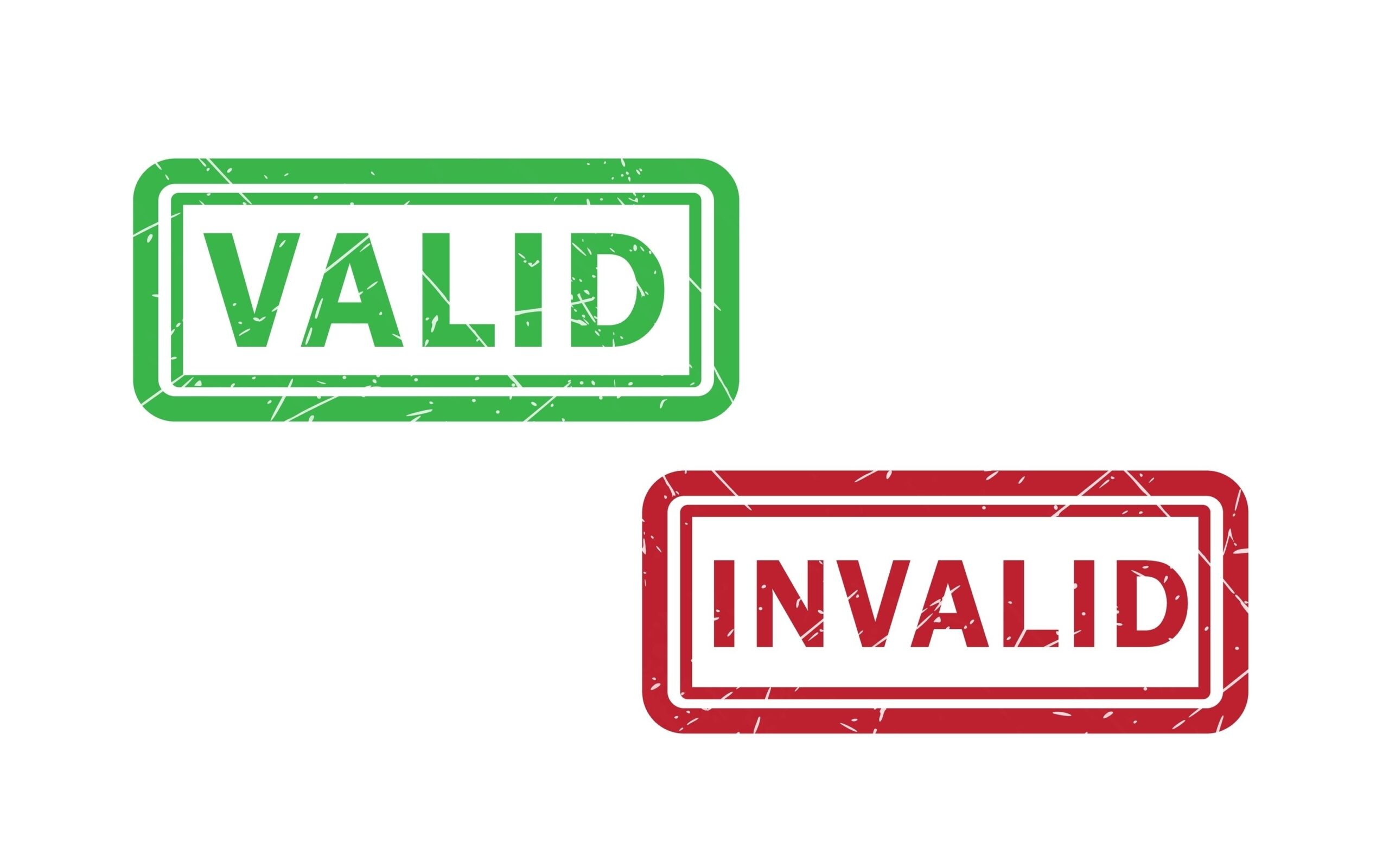Valid & Invalid Chargebacks: What’s The Difference?

Chargebacks are a serious threat to businesses big and small. Half of merchants report that chargebacks are on the rise, and on average, associated costs have been increasing by 10% year-over-year (YOY). It’s crucial for managers, business owners, and other stakeholders to develop a fuller understanding of what chargebacks are and how they can fight them. One key concept is knowing the difference between valid and invalid chargebacks and how to deal with each of them.
Valid vs Invalid Chargebacks: Outlining the Key Differences
There are many “valid” reasons for chargebacks to be filed. By “valid,” we mean chargebacks that follow the rules and policies stipulated by the card networks (Visa, Mastercard, etc.). In other words, a valid chargeback is a “compliant” chargeback, and the cardholder has a legitimate complaint. An invalid chargeback, on the other hand, is not compliant with the rules set by the card networks and may even be the result of fraud perpetrated by the cardholder (aka ‘friendly fraud’).
Some reasons a chargeback may be legitimately filed include:
-
Someone obtained the cardholder’s payment info and made an unauthorized purchase.
-
The ordered products or services were never delivered or rendered.
-
The products arrived damaged and the merchant refused to rectify the situation.
Often (but not always), valid chargebacks are the result of merchant error. The merchant might forget to ship a product, for example.
That said, an error on the cardholder’s part can also lead or contribute to valid chargebacks. Let’s say someone at the gym forgets to lock his or her locker, enabling a thief to steal their credit cards. Should the thief make an unauthorized purchase and the customer files a chargeback, it’ll be considered a valid chargeback. The cardholder will have their funds returned even though it was the cardholder’s own lax security that led to the unauthorized purchases.
Invalid Chargebacks Contrasted
An invalid chargeback is a chargeback that was not filed for a legitimate reason. Put another way, the reason for filing the chargeback is inaccurate or false. Often, these chargebacks result from cardholders abusing the chargeback process for their own benefit. This is called friendly fraud or first-party fraud (more on that later). Ultimately, first-party fraud is estimated to account for as much as 75% of all chargebacks for certain industries.
In some cases, merchant error can also cause or at least contribute to invalid chargebacks. If a merchant uses vague billing descriptors, for example, it could confuse the cardholder and they might not recognize a legitimate purchase that they made. Fearing that they’d been defrauded, the cardholder might file a chargeback even though they have no legitimate legal reason to do so.
Situations that can result in invalid chargebacks include:
-
The customer is trying to score free products or services.
-
A cardholder doesn’t want to deal with the merchant’s return process.
-
The cardholder forgets a purchase they made.
-
The cardholder accidentally made a purchase and doesn’t want to pay for it.
-
Buyer’s remorse.
In practice, however, most invalid chargebacks are the result of fraudulent activity on the cardholder’s part, which is referred to as first-party fraud or friendly fraud.
Invalid Chargebacks and Friendly Fraud
The chargeback process was designed to protect cardholders, and in practice, it does provide chargeback protection. Unfortunately, some cardholders have realized that chargebacks can be abused, and merchants must often pick up the tab when they are hit with invalid chargebacks.
Cardholders can engage in so-called “friendly” fraud. Often, the cardholder is using chargebacks to essentially steal money and/or products and services. (With fraudsters, there’s nothing “friendly” about this, and increasingly, industry experts refer to friendly fraud as “first-party” fraud.) A cardholder can make a legitimate purchase with their credit card, but once the products are delivered, he or she could contact their bank to request a chargeback. If the card issuer files a chargeback, the cardholder may be able to recoup the spent money while also keeping the purchased products (or services). This money comes out of the merchant’s account.
That said, cardholders may also unintentionally commit first-party fraud. Often, this is due to confusion, say due to vague billing descriptors or a delayed delivery, which may be the fault of the delivery service used.
Preventing Valid Chargebacks
The good news is that there are ways for merchants to mitigate most of the damage done from valid chargebacks, and in fact prevent them from happening in the first place, including:
-
Setting up chargeback alerts to resolve disputes before a chargeback is filed.
-
Offering a return process.
-
Using multilayered, automated fraud mitigation tools to identify and pause potentially fraudulent transactions.
Preventing and Combating Invalid Chargebacks
Fortunately, merchants can leverage a variety of tools and processes to prevent chargebacks and win chargeback disputes. Since chargebacks will eat into a company’s bottom line and may even erode a merchant’s competitiveness, it’s crucial to prevent and combat chargebacks.
Preventing invalid chargebacks:
-
Using clear billing descriptors to reduce confusion.
-
Ensuring customers can return purchases.
-
Using chargeback alerts to prevent a chargeback from being filed.
-
Requiring signed shipping receipts upon delivery.
-
Gathering and sharing relevant data with card issuers.
-
Leverage first-party fraud tools, such as Mastercard Ethoca and Visa Verifi solutions.
As you can see, there are many ways you can prevent and deflect chargebacks. Trying to manage everything can feel daunting, but with the right dispute resolution platforms, you may be able to dramatically lower chargebacks. If you do get hit with a chargeback or receive an alert regarding a pending one, chargeback management tools make it easier and less time consuming to respond.
How Merchants Can Fight Invalid Chargebacks
Merchants can also use the representment process to combat chargebacks. During this process, if the merchant can prove that the cardholder made a legitimate purchase, the chargeback will be denied, and the merchant will receive the revenue from the transaction. For merchants, winning a chargeback dispute typically requires compelling evidence, such as footage of the cardholder making the purchase or showing the product off on social media.
Fighting and Preventing Chargebacks Made Easy
Unfortunately, managing and fighting chargebacks manually is rather time and labor-intensive. This leads to ballooning costs and the true cost of the chargeback will be more than “just” the lost transaction revenue. Indeed, once it’s all said and done, the losses stemming from a chargeback could end up being double or more of the original amount in dispute.
ChargebackHelp offers a variety of tools to prevent and combat chargebacks. Our platform also makes it easier to manage and use chargeback prevention tools provided by other providers, such as chargeback alerts offered by Mastercard’s Ethoca and Visa’s Verifi subsidiaries.
With the right tools, you will reduce the time and resources spent dealing with chargebacks. You can also improve your odds of winning chargeback disputes when they crop up. By proactively managing chargebacks, businesses can ward off fraud and even improve competitiveness and increase their bottom line.







